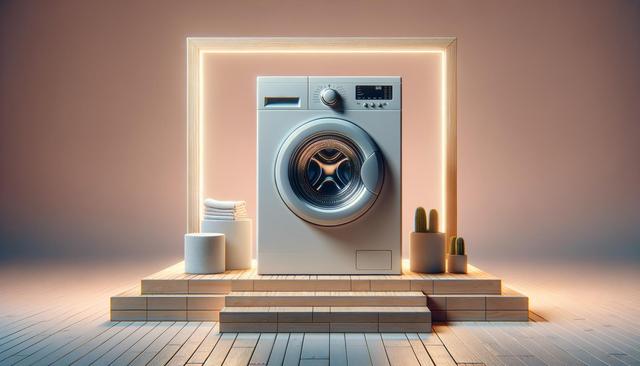Washing machines are now much more affordable:

Understanding the Modern Washing Machine
Washing machines have undergone significant transformations over the past few decades. Originally considered a luxury item, they have now become a standard fixture in most households. Today’s machines are not only more technologically advanced but also more energy-efficient, user-friendly, and cost-effective. With the integration of digital controls, multiple wash programs, and smart sensors, washing machines are designed to provide a customized laundry experience. These features allow users to choose specific settings based on fabric type, load size, and even the level of dirt, optimizing both water and energy usage in the process.
The affordability of modern washing machines is largely due to increased competition in the appliance market and advances in manufacturing technologies. More consumers can now access high-quality machines without overspending, which was not always the case in previous decades. Additionally, the availability of budget-friendly models that still offer excellent functionality has made washing machines more attainable for a wider range of households.
Key Features to Look for When Buying
When shopping for a washing machine, understanding which features align with your laundry needs can save you time and money. Today’s machines come with a variety of features that enhance convenience and performance. Here are some important factors to consider:
- Load Capacity: Machines come in various sizes, typically from 6 to over 12 kilograms, allowing users to choose a model based on family size and laundry habits.
- Wash Programs: Many machines offer pre-set wash cycles such as quick wash, delicate, heavy-duty, and eco modes, each designed for different fabric types and levels of soiling.
- Spin Speed: Measured in revolutions per minute (RPM), higher spin speeds can reduce drying time by extracting more water from clothes.
- Energy Efficiency: Look for machines with a high energy rating to reduce electricity and water consumption.
While high-end models offer advanced technologies like steam cleaning and Wi-Fi connectivity, even more affordable options now include many useful features that were once exclusive to premium models. This shift has empowered more consumers to make smart purchases based on their specific needs rather than settling for what their budget allows.
Types of Washing Machines Available
There are several different types of washing machines available on the market, each with its own set of advantages. Understanding these types can help you make a more informed decision.
- Top-Load Machines: These are generally easier to load and unload, especially for those who may have difficulty bending. They also tend to be quicker in wash cycles.
- Front-Load Machines: Known for their energy and water efficiency, front-loaders often clean clothes more thoroughly and are gentler on fabrics.
- Semi-Automatic Machines: These are more affordable and allow manual control over certain functions, making them ideal for users who prefer more involvement in the washing process.
- Fully Automatic Machines: These require minimal user intervention and handle the entire wash cycle from start to finish with the press of a button.
Each type caters to different preferences and living situations. For example, compact models are ideal for apartments or homes with limited space, while larger capacity machines suit families with more substantial laundry needs. The increased affordability of all these types means that users no longer have to compromise heavily on functionality based on their budgets.
Maintenance and Longevity Tips
Proper maintenance of your washing machine can significantly extend its lifespan and ensure consistent performance. Whether you own a high-end model or a more basic one, routine care is essential. Here are some practical tips to keep your machine running efficiently:
- Clean the Drum: Run a monthly cleaning cycle using a washing machine cleaner or a mix of vinegar and baking soda to remove detergent residue and prevent mold buildup.
- Check and Clean Filters: Lint filters and water inlet filters should be cleaned regularly to prevent clogging and maintain water flow.
- Leave the Door Open: After each wash, leave the door slightly open to allow air circulation, reducing moisture and preventing mildew.
- Use the Right Detergent: Always use the recommended type and quantity of detergent to avoid excessive suds and buildup.
Following these basic practices not only keeps your machine in good working condition but also ensures that your clothes are washed effectively. Most modern machines come with self-cleaning features and reminders, making maintenance even easier for users.
Affordability and Access for More Households
One of the most notable changes in the washing machine market is the improved accessibility for a wider audience. Prices have become more competitive, and many brands offer installment payment plans or seasonal discounts, making it easier for households of varying income levels to own a machine. Additionally, government initiatives and local programs in some regions have further contributed to affordability through subsidies or incentives for energy-efficient appliances.
This shift has had a significant impact on daily living, especially in communities where access to laundry services may be limited. Now, more homes can benefit from the convenience and hygiene that washing machines provide. The reduction in manual laundry work also means more time for other activities, contributing to overall quality of life. Moreover, second-hand or refurbished models have become viable options for those seeking functionality at a lower cost, further widening access.
With innovations continuing and prices remaining competitive, washing machines are no longer a luxury but a practical necessity that many more households can afford and enjoy.
Conclusion: Making Smart Choices for Everyday Comfort
Washing machines have evolved into accessible, efficient tools that simplify one of the most routine yet essential household chores. With a wide range of models, features, and pricing options, there’s a suitable machine for nearly every household. The growing affordability means that this comfort is no longer restricted to higher-income households, allowing more people to enjoy the convenience of clean laundry with less effort. As consumers continue to prioritize both value and utility, it’s clear that the modern washing machine meets the demand for practical, long-term solutions in home care.
